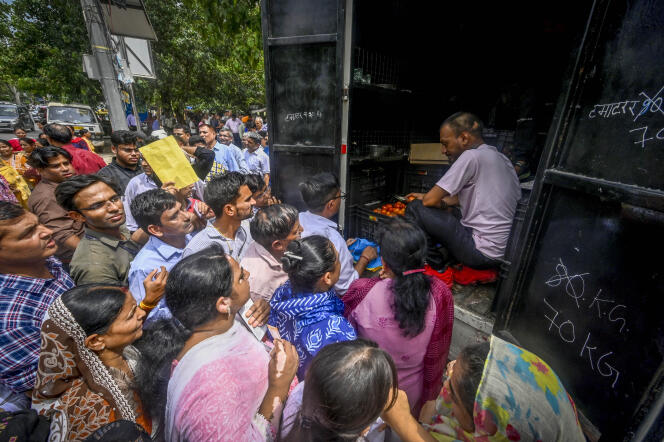


The crates of scarlet tomatoes have finally returned to the Okhla wholesale market's aisles in south New Delhi. At around 6 am, trucks that had traveled thousands of kilometers from Ahmedabad in the west, and Bangalore and Nashik in the south, were unloaded with particular gusto. "New tomatoes are arriving, and they're good quality," said Pappu Singh, a merchant who has been buying here for over 35 years, before going on to supply restaurants and street vendors in a neighboring district.
In July, torrential monsoon rains and pest attacks in tomato-growing regions destroyed part of the crop, while roads were blocked due to flooding, hampering tomato transportation. As a result, prices for this staple food – used to prepare many sauce-based Indian dishes – soared, increasing as much as 700% at its peak. "I need 1,000 kilos of tomatoes a day, and I was only getting 100 because of the bad weather. What's more, wholesale prices had reached 200 rupees [€2.20] a kilo," said Singh. By late August, they had dropped to 50 rupees a kilo (€0.55), bringing a collective sigh of relief. "Everyone's happy because tomatoes are cheap," said another merchant, smiling.
This summer, India experienced a "tomato crisis." With tomatoes becoming a rare commodity, thefts from farms multiplied, as did those from transport trucks. In early July, a farmer in Karnataka was robbed of 50 to 60 bags of tomatoes, worth 250,000 rupees –equivalent to almost €2,800. Another grower in the same region filed a complaint after strangers picked the fruits of his harvest, worth 1.5 million rupees, over €16,000. Consequently, as the new harvest approached the following month, farmers in Karnataka and other producing regions such as Maharashtra and Madhya Pradesh stood guard around the clock to prevent tomato thefts.
One after another, fast-food chains announced that tomatoes would no longer be available in their restaurants. In the wake of poor harvests and soaring prices, McDonald's, Subway and Burger King all decided to remove them from their menus. This might have made people smile, but the price surge also had significant consequences on the budgets of Indian households, who had to adapt as well.
Some went straight to the wholesale markets for cheaper supplies. Most had to revise their recipes and menus. "When tomatoes reached 300 to 350 rupees a kilo [€3.30 to €3.90], I started cooking vegetables without tomato sauce, whereas we usually use this food without counting the cost," said Bhupinder Kaur, a 52-year-old housewife. "I was down to using just one tomato in my curries, whereas you usually need three. At the height of the crisis, I replaced fresh tomato with industrial tomato purée."
You have 66.27% of this article left to read. The rest is for subscribers only.
